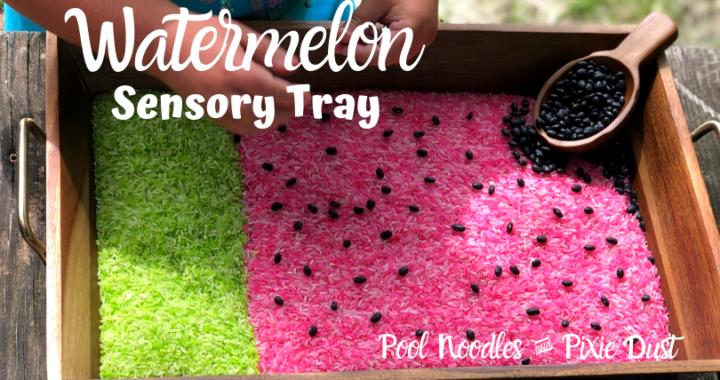We may earn money or products from the companies mentioned in this post.
We love playing with watermelon when summer rolls around. And, last year we put together a watermelon sensory bin using a real whole watermelon! It was so fun, but also more prep and clean-up than I had time for this summer.
So, I came up with a super simple and totally fun watermelon sensory play idea with this watermelon sensory tray!
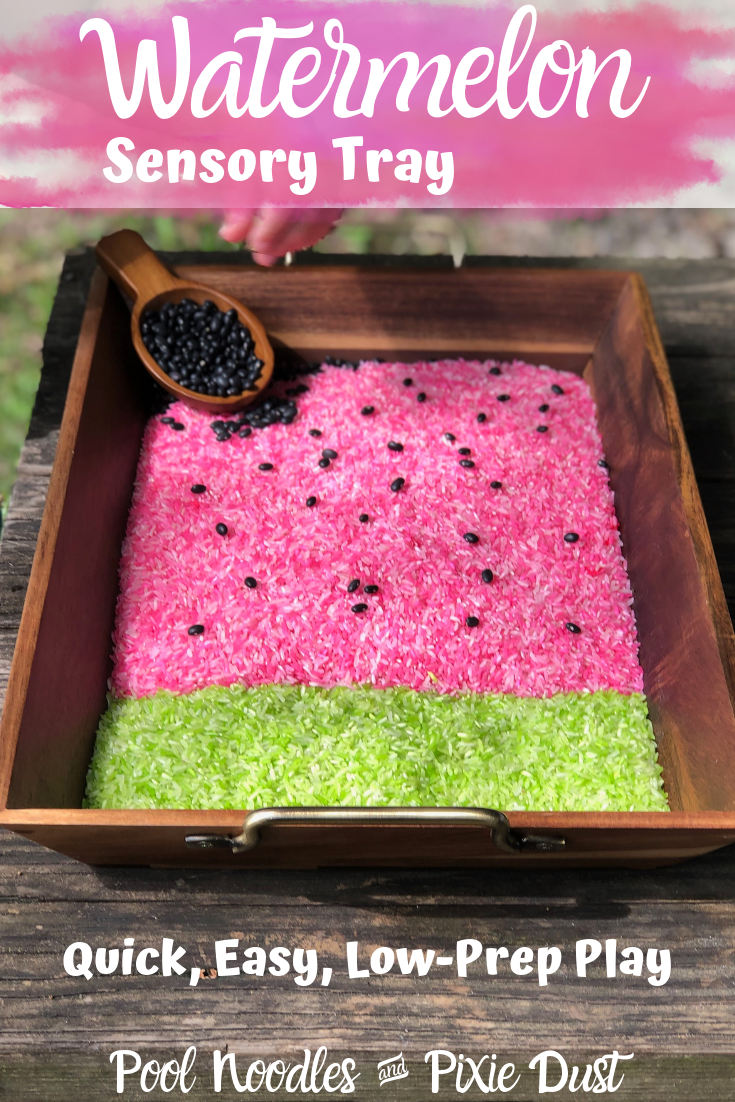
Watermelon Sensory Tray Materials
-
Tray or Bin (we use one similar to this wooden tray from Target)
-
Scoops, Spoons, and Small Cups or Clay Pots
-
Pink Neon Gel Food Coloring
-
Green Neon Gel Food Coloring
-
5lb. Bag of White Rice
-
Dry Balck Beans (We only used a few handfuls)
Watermelon Sensory Tray Prep
To get started you need to color your rice. Here’s our easy peasy way to color rice.
First, fill two gallon-sized freezer bags with the desired amount of rice. I didn’t measure mine, but we did use most of a 5lb. bag. We filled one bag with about 4 times more rice than the other. As the bag with more rice would be colored pink to represent the watermelon flesh and the one with less would be colored green to represent the rind.
Once your rice is separated into the two bags start adding your gel food coloring. Gel food coloring is more expensive than regular food coloring, but it’s so much better. It is thicker and contains much less water. And, makes the color deeper and more vibrant, so you don’t have to use as much.
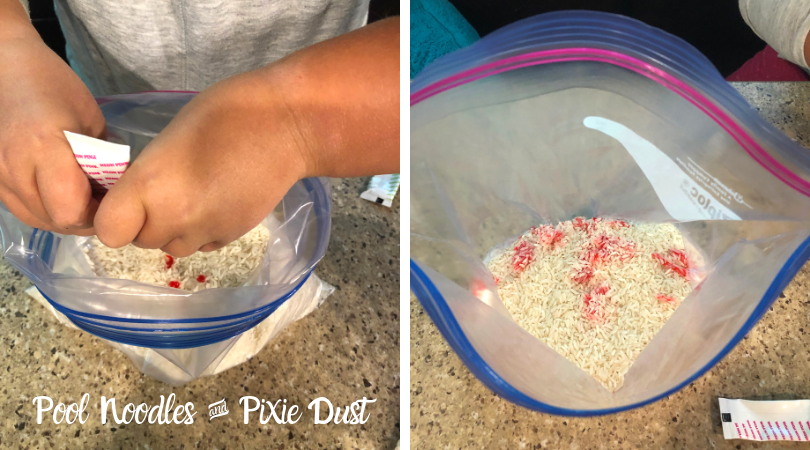
Plus, if you’re coloring rice you can’t really use regular food coloring as it contains so much water. It would bloat the rice and make it really hard to dry or color in large batches.
Again, we didn’t measure and just added food coloring a bit at a time. We would put some in and then close the bag to move the contents around inside and mix the rice with the color. My daughter loved this part:)
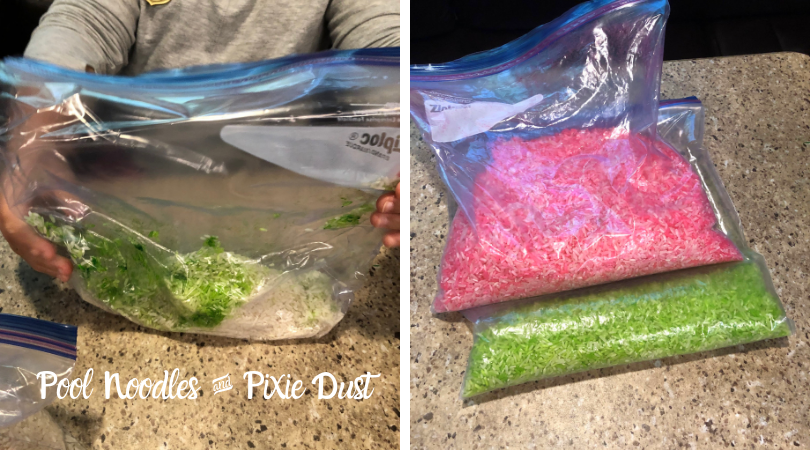
Once the color looked good to us, I set the bags on our kitchen island to dry. Leave them open so the rice will air dry. I left our bags overnight, but I don’t know if that was necessary as it really never seemed too wet.
Once, you’re satisfied your rice is dry add it to the tray or bin you’ll use for playing.
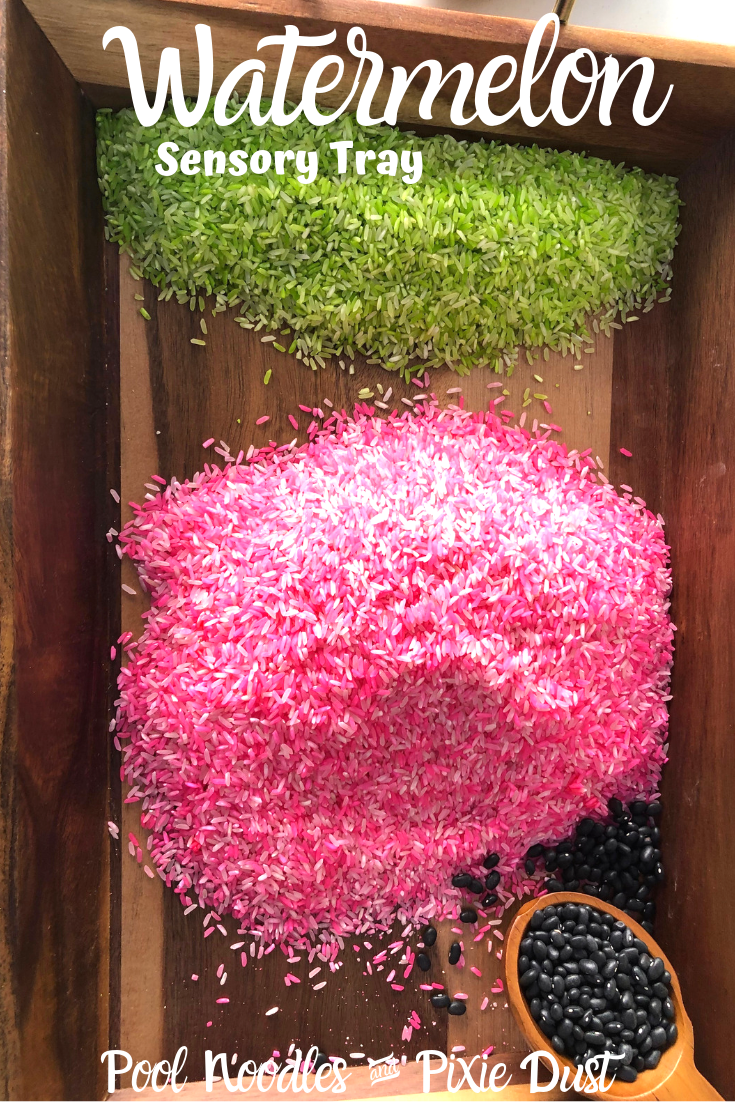
Watermelon Sensory Tray Set-Up
To set-up, your watermelon sensory tray, add the pink and green rice to your bin. I added ours in two separate sections so that it would resemble a slice of watermelon. Even if it was a rectangular slice:)
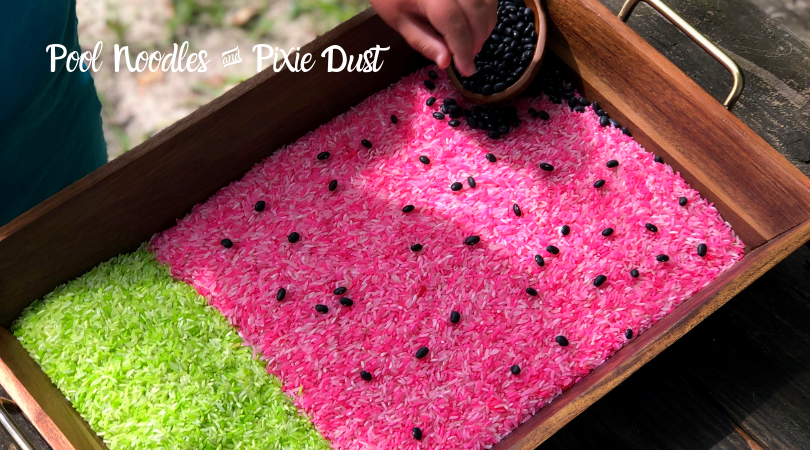
Then, I let my daughter add some of the dry black beans to the pink section to represent the watermelon seeds. You could probably use a package of actual watermelon seeds if you’d like. But, I used black beans because I already had some and because they’re a little bigger than watermelon seeds making them easier to manipulate.
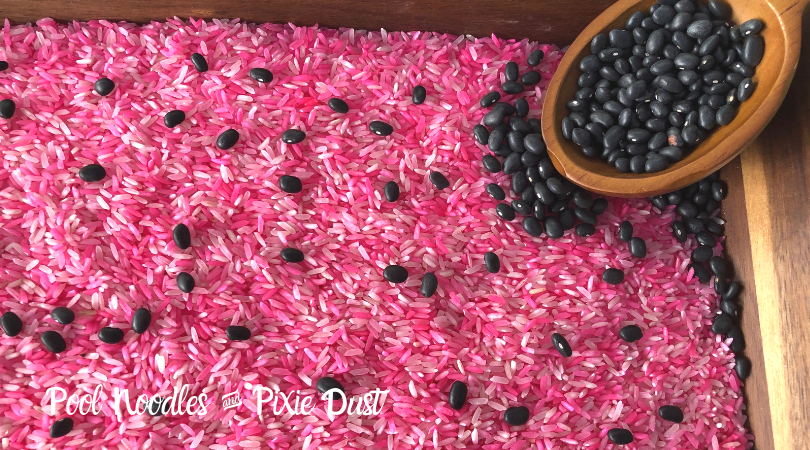
I added wooden scoops, wooden tongs (for picking seeds out of the watermelon) and tiny clay pots for my daughter to play with. And, the tray was set up!
She’s been playing and having a ball with it for the past week. Eventually, our colored rice became mixed together. But, I think it still looks great and was just as fun for playing in that way.
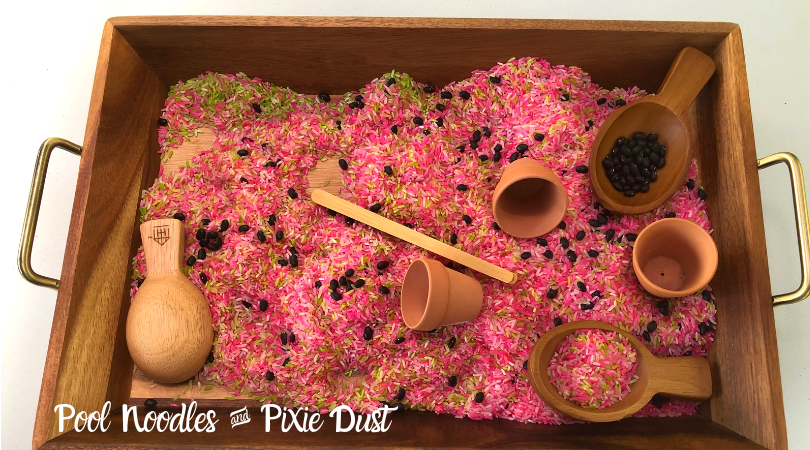
Watermelon Sensory Tray Play Ideas
Fine Motor Practice – This sensory bin is perfect for fine motor practice. The rice is able to be scooped into spoons, transferred from container to container, poured, and so much more.
I added an extra fine motor activity to this bin with wooden tongs. You could use any kind of tongs or tweezers designed for kids though. My daughter used ours to pick up the “watermelon seeds” (black beans) and move them around the bin.
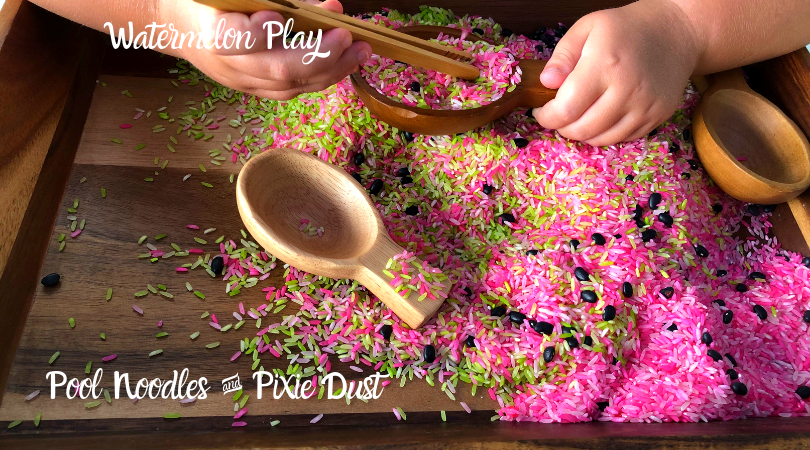
Counting Activity – If you want to add some learning to this activity your child could count the seeds as they move and pile them around the rice or into cups.
Parts of a Watermelon – Arranging the bin so it actually resembles a slice of watermelon will give you an opportunity to talk about the parts of a watermelon. Flesh, rind, and seeds.
Colors – Our family actually got into a lengthy discussion about the “real” color of watermelon as we were setting up this tray for my daughter. My son seemed to think we’d chosen the wrong color for the watermelon, as it should have been red. Which, led to us discussing hues, and the range of colors (from red to pink and even other colors) that we’ve seen in actual watermelon we’ve eaten. The rind of course also has variations of color from white to yellow to deep green.
